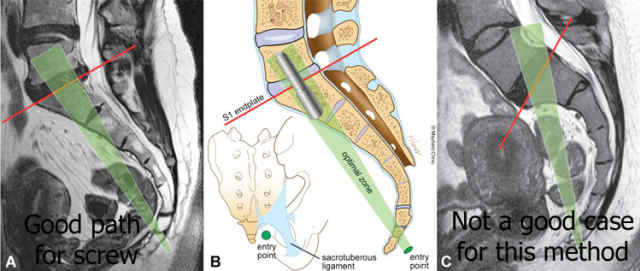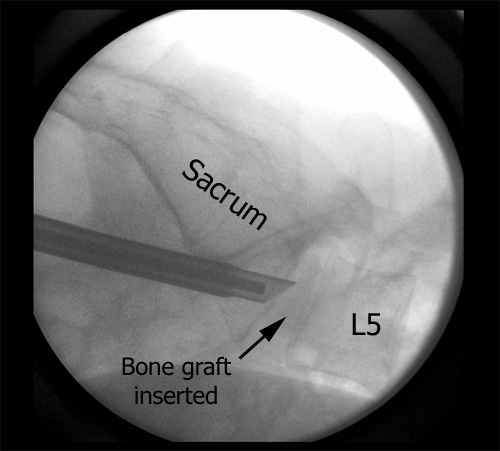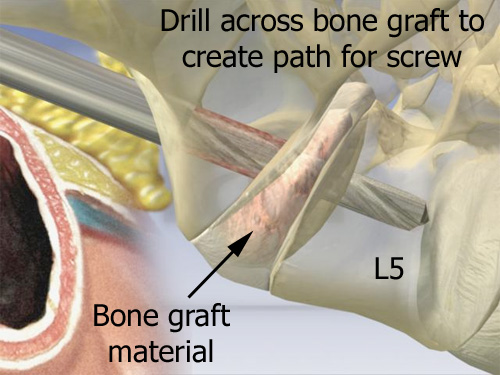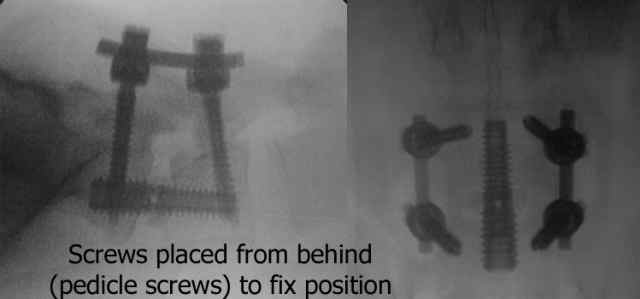AxiaLIF
The name for this procedure is a contraction of the words “Axial” ( which refers to the line along the “axis” of the spine, a line that would be drawn between the vertebral bones) and Lumbar Interbody Fusion, which refers to lumbar (low back) interbody (between the vertebral bodies), and fusion (taking out the soft tissues and attempting to glue the bones together with more bone). This technique is a relatively new approach for fusion at the base of the spine.
This approach is made through a small incision near the tailbone. Through this method of fusing the spine, a pain-causing disc can be fused (bones healed together so that two bones become one), with relatively little soft tissue dissection. This technique can be used for fusion between the lowest bone of the spine (L5 vertebra) and the sacrum.
The path for access to the L5-S1 spinal disc is outlined in figure B below. While most patients who need this surgery would be a candidate based on their anatomy (see example A below), occasionally, patients have variations of their sacrum that would make this procedure inappropriate for them (see figure C).
The procedure is illustrated on this video .

There is a path behind the rectum by which the spine can be accessed for this procedure. There are no major blood vessels in this region


After the proper entry point on the sacrum is identified (with xray guidance) a guide pin is placed and a working channel is created so that the remainder of the procedure can be done from within that working tube.
Specially designed instruments are used to shave and extract disc material, creating a surface where the bone fusion can take place.


After the disc material is removed, the bone graft is placed in the region where the fusion is to occur. The body remodels this graft material in most cases* to allow the fusion to occur.
After the disc is cleaned out and the bone graft is placed, the L5 vertebra is drilled to make a path for the stabilizing screw.
_______
*for full disclosure, even in optimal circumstances, fusion rate is not 100%.
The screw is passed over a guidewire into the final position. After the fusion is completed in the front, screws are usually placed from behind to stabilize the construct.



For more information from the company website, click here.
